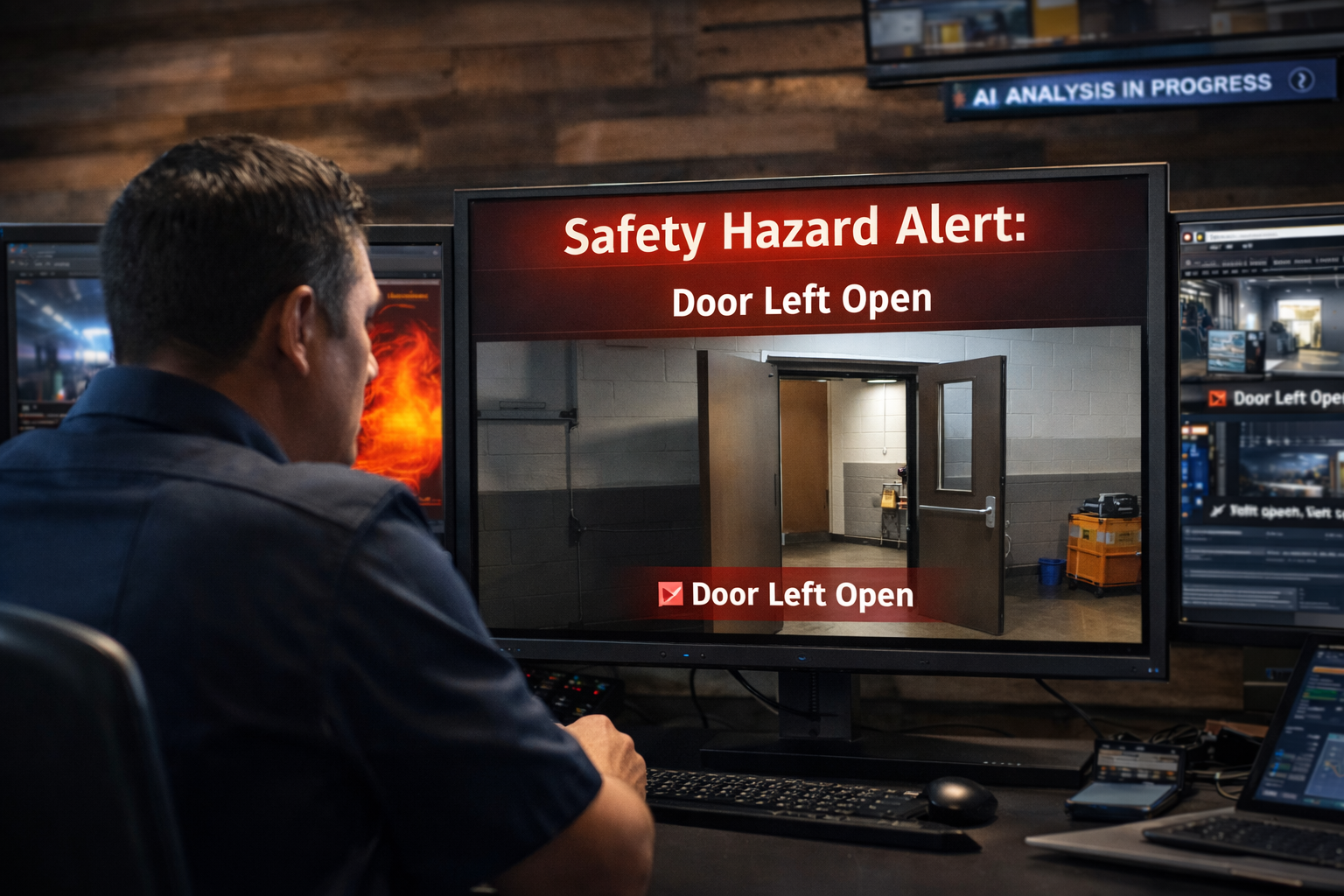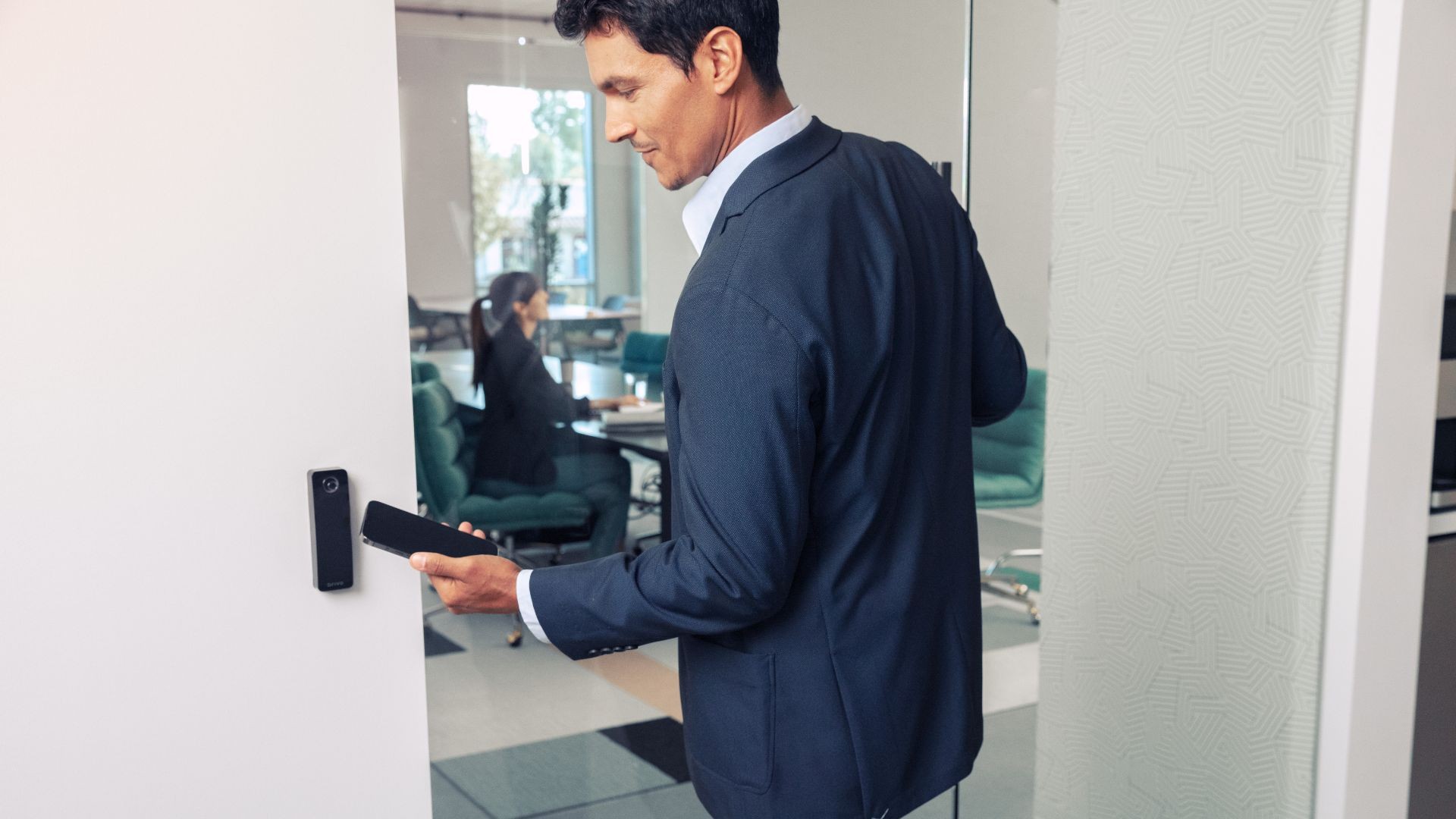TL;DR
Integrated environmental and security sensors detect vaping, smoke, volatile compounds, gunshot sounds, and abnormal noise patterns in real time so you can verify and act immediately.
When those sensors are paired with a VMS or access control platform, they can trigger camera views, lockdowns, and automated alerts, which reduces response time and false alarms.
The combination improves compliance reporting, supports centralized monitoring across multiple sites, and delivers measurable operational savings for schools, healthcare, manufacturing, and multi-site operations.
Integrating Environmental and Security Sensors: A Smarter Way to Protect Your Facility
Suppose you run facilities with high occupancy or regulated environments. In that case, unseen risks such as poor air quality, vaping, chemical leaks, or aggressive incidents can quickly become health, liability, and compliance problems. Most traditional security systems only see what cameras can show. Adding environmental sensors gives you the missing inputs so you can stop issues before they escalate.
How Do Environmental Sensors Enhance Security Systems?
Environmental sensors add non-visual data to your security stack. Modern smart sensors measure air quality, volatile organic compounds, smoke and vape aerosols, sound signatures like gunshots, and abnormal noise levels. Those events can be tagged and routed into a video management system or access control platform so operators see the relevant camera feed and event context at the same time. HALO Smart Sensors are an example of this class of device and are designed for school, healthcare, and commercial deployments.
Avigilon Unity and Alta platforms support sensor integrations that let you set thresholds, pair an alert to a camera, and choose how the notification is delivered. That means a sensor alert can automatically bring the right video into view, create an incident bookmark, or trigger an access control action without manual searching.
What Are the Key Benefits of Integration?
Integrated environmental and security systems create a proactive safety layer with clear operational benefits:
- Faster, verified responses. Alerts link directly to camera footage and door status, so staff can verify events and act immediately.
- Fewer false alarms and wasted responses. Cross-checking sensor readings with video reduces unnecessary dispatches and investigations.
- Compliance and logging. Automated event logs and environmental histories support OSHA, local safety codes, and other audit requirements.
- Operational insights. You can monitor HVAC performance, occupancy trends, and environmental health alongside security metrics to drive efficiency.
Schools Report a Drop in Vaping Incidents with HALO Smart Sensors
A school district implemented HALO Smart Sensors integrated into their Avigilon environment. The district reported a large drop in vaping incidents and faster incident verification after integration. That same approach helped them tune sensor placement and reduce unnecessary alarm investigations.
Risks and Responsible Deployment
Networked sensors bring benefits, but you must manage privacy and cyber risk. Vulnerabilities have been reported in some sensor models that could expose audio or allow device hijacking on poorly secured networks. Treat these devices like any IP endpoint: place them on segmented networks, require strong credentials, keep firmware patched, and follow vendor guidance for secure deployment.
What to Ask Before You Buy or Integrate Sensors
- Can the sensor reliably detect the events you care about, such as vaping, smoke, VOCs, or gunshot sounds? Ask for vendor detection data and examples.
- Does your VMS or access control platform support direct integration or an API bridge? Confirm vendor compatibility and how alerts are mapped.
- How will alerts be routed, and who receives them? Define escalation paths and on-call responsibilities.
- What are the network and firmware security requirements? Plan for segmentation, strong passwords, and regular updates.
- What logging and export options exist for compliance and auditing? Confirm retention and export formats.
FAQ
Q: Do environmental sensors record audio or video?
A: Most smart environmental sensors do not record video. Some include microphones for event detection and pattern recognition. Understand the device capabilities and vendor privacy claims before deployment. Segment these devices on secure networks and apply firmware updates to protect privacy.
Q: Will these sensors integrate with my current VMS or access control system?
A: Many modern platforms, including Avigilon Unity and Alta, support direct integrations or API connections to major smart sensor vendors. Verify the specific model compatibility and integration method during planning.
Q: How much operational benefit can I expect?
A: Benefits vary by site, but organizations report measurable drops in incident response time and reductions in false alarms once sensors are properly integrated and policies are in place. Case studies from the education and healthcare sectors show notable improvements.
Ask Us How Smart Sensors Can Optimize Your Operation
If you want visibility without guesswork, integrate environmental sensors into your security platform and adopt a secure deployment plan. Hoosier can evaluate your sites, show a demo at the Experience Center, and provide a rollout plan that includes network segmentation, vendor selection, and service level agreements.
Schedule a demo of HALO and Avigilon integrations at the Hoosier Experience Center or contact a Hoosier advisor to build a site survey and integration roadmap.









